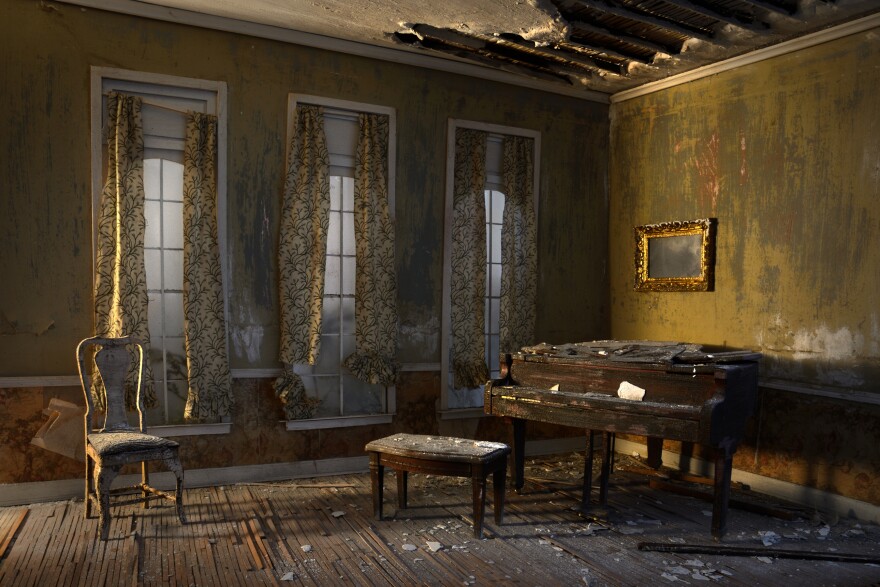As Carrie Becker wrapped up a master's program in sculpture, she slipped into a self-described depression. To manage her feelings of ennui and frustration, the artist would take off from Manhattan, Kan., where she attended Kansas State University, on long drives that wound into the surrounding countryside. She took her camera and stopped at abandoned buildings and farmhouses, breaking in to document their interior spaces.
“It’s addictive, it’s like opening a present, you have no idea what you’re walking into when you open the door, or crawl through the window,” Becker said, reflecting on the experience.
Becker no longer trespasses in rural architecture but the experiences gathered in rickety buildings in America's heartland helped inspire her project “Of Small Rooms” on display at William Shearburn Gallery through July. Becker’s images are conceptual slight of hand. At first they appear to be pulled from her catalog of trespass photography. Yet a closer look reveals each room is a model, a to-scale replica of an imagined space. That tension between real and imagination is the highlight of the work according to gallerist William Shearburn. The viewer is forced to confront a world that looks familiar, but is entirely the artist’s.
“It’s her own world. And that’s the beauty of her work. You know? She’s tricking you in a way to see something that doesn’t really exist in real life,” Shearburn said.

It’s a trick that takes time to perfect. Each image in the project took at least 100 hours of dedicated time to gather materials, construct the model, set up the camera and shoot the scene. The work is at times minute. The materials range from Popsicle sticks to off-brand Barbie furniture, fabric swatches to spray paint and acrylic. Although construction makes up a fair amount of the labor, Becker herself isn’t certain how the image will turn out until the model is complete and she’s behind the lens.
“It happens so often when you’re like ‘this is going to be really awesome!’ and then it just doesn’t work,” said Becker. Sometimes the thickness of a chair leg doesn’t fit the room’s proportions and the artist will have to whittle it down to fit.
Becker is not new to working in miniature. In 2012 her project, “Barbie Trashes Her Dream House," went viral and was eventually featured in such online publications as TIME, The Atlantic, The Huffington Post, Flavorwire andjezebel.com. The funny but dark series imagined Barbie on the edge, having slipped into hoarding habits. Her washroom was filled with plastic bags. Her bedroom was a mess of miniature boxes and papers and the detritus of daily living.
Even that project was the result of Becker’s frustration after graduating from Kansas State University. Prior to enrolling in the program she worked in commercial photography. In school she concentrated on building fabric-focused full-room sculptural installations. After graduation she began the “Dream House” project as way of reacquainting herself with commercial photography lighting techniques.

Becker says another turning point occurred when she encountered the work of miniature architectural photographer James Casabere and fell in love with his minimalist to-scale architectural space images. Although her work is focused on space and her own world, Becker hopes it can help people connect with their own passions.
“I just hope someone else can have a similar epiphany or be inspired to do their own thing like be an adult that plays with toys, for example,” she said.
For her gallerist, Shearburn, Becker’s work contributes to the larger history of art in general.
“I think that she’s a new voice that definitely needs to be seen and heard,” he said.



